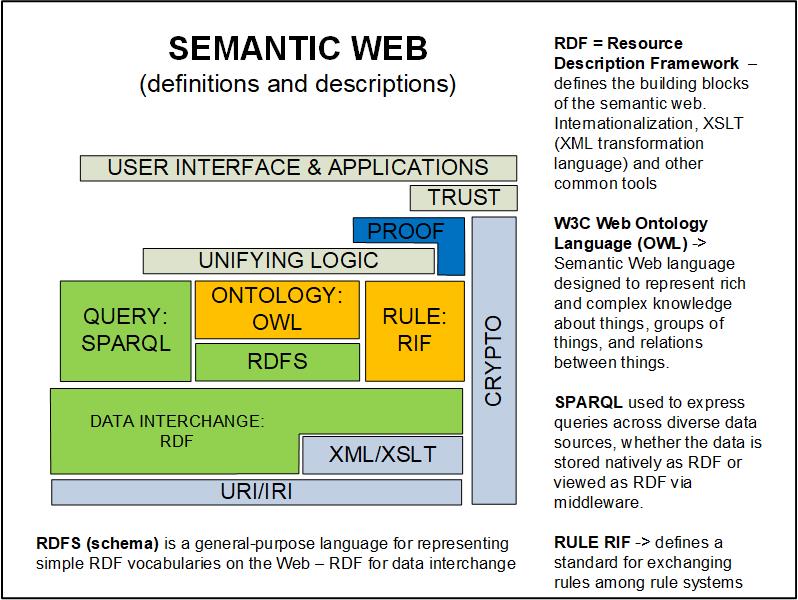Magic in the Metaverse
Linking the cloud to Web 3.0

The magic just gets more involved. What “magic” you say? And one answers “all the magic”... which infers that the “magic” is still being defined, developed, and experimented with.
As the title of this article infers, this “magic” consists of elements in Web 3.0 (which claims to empower creatives and users—both—to share in the value they create). The values, summarized in the introduction to Shelly Palmer’s Metacademy, provide businesses (whether new or existing) the knowledge and linkage into communities associated with these new entities including blockchain, NFT, and the metaverse.
So how does this fit into your needs or interests in cloud-based activities? A good example is blockchain, which is like “information carved into stone.” Such information (e.g., a contract or copy protected media) is configured as permanent, unchangeable, and ambiguous as to what you’ve written that data into. Cloud-centric services can properly handle such configurations because the data lives on a distributed network across a large number of computer-based systems (servers) as in a mesh or a peer-to-peer (P2P) environment.
Web 3.0 is meant to be a bottom-up design with decentralization, open to everyone, and built on top of blockchain technologies and developments in the Semantic Web."
Because the information is essentially “permanent” one can easily tell if anything associated with that information has been altered. Although you can “add” to the blockchain, you cannot modify the existing data set—thus rendering a protected value that can be recognized for its authenticity for eternity.
Immutable Cloud via Distributed Data
Blockchain uses a cryptographic hash algorithm as a one-way function which is derived from the original data. Altering that data (even a date-code or GPS coordinate) generates a new unique functional representation, which can be compared against the original authenticated data and signifies that the original data and the current data are different.
This original data is “hard-and-fast”—otherwise called “immutable”—which means it is unchanged over time and is unable to be changed. Thus, blockchain, in this described context, is protected and cannot be modified. Blockchain is extensible across any cloud service as an inalterable contract that is safe and valid irrespective of where the data is stored or sent to/from.
Sometimes called a distributed ledger, blockchain uses a digital file which is continuously growing via an encrypted transaction (the “blocks”) which are copied to a P2P network of distributed computers. Here, each computer (node) accesses information on a computer that serves information to its clients (i.e., other servers). Nodes on this P2P network create a consensus, i.e., an algorithm which is used to resolve conflicts and to ensure the accuracy of the blockchain.
The professional video industry's #1 source for news, trends and product and tech information. Sign up below.
Distributed and decentralized ledgers are what power the system. P2P networks are very stable because the information is replicated in a multitude of places, irrespective of the scale of the system. This makes such applications perfect for a cloud-based environment, since the cloud (in theory) can function at any scale.
Hashing as Sequential Records
As the name implies, blockchain is a set of records that are linked—or chained—together sequentially using an index, a series of timestamps, a listing of each of the transactions, a “proof” and the hash (algorithmic set of mathematically derived data) from the previous block. Alteration of any one block changes the hash of all downstream successive blocks which are unrecoverable or reversable.
A hashing function (Fig. 1) simply takes a variable number of characters (the ”message”) and converts it into a string with a fixed number of characters—referred to as the “hash value.”
Cloud Computing and Blockchain
The blockchain is a set of unchangeable and decentralized data sets (the blocks) which utilize a shared database. In cloud computing the system is orchestrated for delivering computing services.
It is comprised of servers, databases, storage, and associated activities. To increase data security, cloud computing will use blockchain peculiarities. Due to its scaling capabilities, the cloud can provide on-demand computing resources for blockchain operations.
Secure, Unique, Adaptive and Semantic
Security is often thought of as “the elephant in the room” with most people having only limited familiarity with it. The goal of the new “Prime Web 3.0” is to change that perspective with examples which include ubiquity, decentralization, artificial intelligence, blockchain-security, and connectivity.
Web 3.0 is meant to be a bottom-up design with decentralization, open to everyone, and built on top of blockchain technologies and developments in the Semantic Web (Fig. 2), which describes the web as a network of “meaningfully linked data.”
The World Wide Web Consortium’s (W3C’s) vision of the Web 3.0 is conceptually about linked data. The Semantic Web employs technologies that enable the creation of data stores on the Web, to build vocabularies and to manage or write rules for handling such data.
Web 3.0 is empowered by technologies such as RDF, SPARQL, OWL, and SKOS, which has linked data within an internet framework that employs understandable machine-readable data. Web 3.0 is machine-interpretable, structured and interlinked, with open access sets of data repositories utilizing globally edited adaptive information resources composed of unique web resource identifiers for every bit of information. The concept is a bit like a media-based GUID (Globally Unique IDentifier) whereby each table data cell of a table has a unique identifier.
The current World Wide Web is more than sufficient, but as a tool, many feel they need much more from “the Web” (i.e., the original Web 1.0 and today as Web 2.0). The term “Semantic Web” is an extension to the current Web proposed a decade ago by the “father of the web” Tim Berners Lee, known as TimBL, who conceived and developed it in the late ‘80’s while working at CERN.
Why is the Semantic Web Worth Having?
The current Web of linked documents can present a tremendous amount of human-understandable Web pages from a single search through lexical marching of the search keywords with similar or exact words found in the documents available on the web.
This information is vast and mostly irrelevant to the user (especially after the first pages of the search result). Moreover, users have to scan through individual search results to make meaning out of its content. Such machines store and present the web documents knowing nothing about their content.
On the other hand, a Web that can store data in documents that are both human as well as machine readable opens up a whole new experience of human-machine interaction. Allowing computers to understand Web 3.0 content allows one to only submit basic data or answer a single query before an entire transaction is carried out efficiently by a machine.
Shared Digital Reality
Contrary to the decentralized Web 3.0 and blockchain concepts (the technology behind bitcoin transactions), the rather new and still somewhat confusing term, “the metaverse” is a shared digital reality enabling users to connect with each other, build economies and interact in real time. The metaverse doesn’t care who owns the data or its information.
Web 3.0 brings the internet into the future—noting that we’re still in Web 2.0, which was developed two decades ago and emphasizes user-generated content, collaboration, and social networking. Web 3.0 further allows users to “manage and claim ownership of their works, online material, online personas and digital assets.”
Currently, many businesses only concentrate on the development and delivery of their goods and services. So the evolving Web 3.0 evolution tends to overcome some of the drawbacks or flaws in the previous Web 2.0 internet era by addressing and administering crucial concerns including data ownership, control and management.
The “metaverse is a global 3D network of virtual reality worlds” according to some and further to that “the metaverse is a hypothetical version of the internet” which is confined to a uniform, global virtual world using VR and AR headsets in a near science fiction, futuristic working environment.
Examples include the use of avatars as personal representatives, interchange costs or sales through digital currency exchanges, and complete purchases or acquisitions in its own in-world currency. Users thereby travel aimlessly through the “metaverse” in a means not heretofore used or found practical.
Browsing (the internet) now becomes navigation of a virtual world which mirrors parts of the actual (“real”) world now known affectionately as “the metaverse.” Thus, users now create and enable a new virtual economy, without the transactional limitations of (previously) modern living conditions.
Not to be Confused
Here is where the actuality vs. practicality and the goals of the Web 3.0 experience seem to collide. Gamers understand this new reality—they embed themselves in these interactions which value immersive, interactive, and social platforms to extend their VR/AR/AI experiences without boundaries.
Web 3.0 users and its community have decentralized (i.e., unconnected) ownership and control over the Web. The metaverse, on the contrary, is a shared, digital environment focused on the ability for people to communicate, create their own economy (i.e. the use of bitcoin) and engage in real-time interaction without ownership concerns or knowledge of the “real” owner.
The cloud is essential for this to occur since it knows no boundaries and serves no limitations. It may indeed take decades to see the many wonderful values of the metaverse and its intrinsic differentiations in the evolving Web 3.0. Advancing, aggressive technologies are critical to these foundations… so watch this evolution carefully—they are not easy to fully comprehend, but certainly command an unexpected eye-opening set of changes in our world.

Karl Paulsen recently retired as a CTO and has regularly contributed to TV Tech on topics related to media, networking, workflow, cloud and systemization for the media and entertainment industry. He is a SMPTE Fellow with more than 50 years of engineering and managerial experience in commercial TV and radio broadcasting. For over 25 years he has written on featured topics in TV Tech magazine—penning the magazine’s “Storage and Media Technologies” and “Cloudspotter’s Journal” columns.


